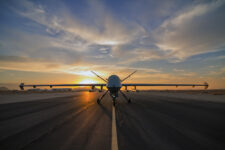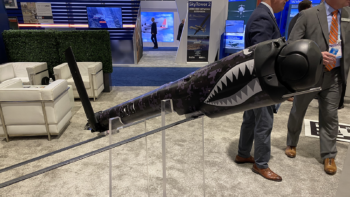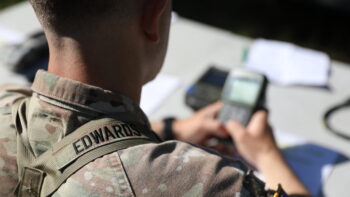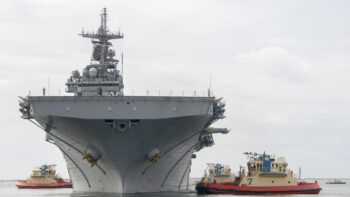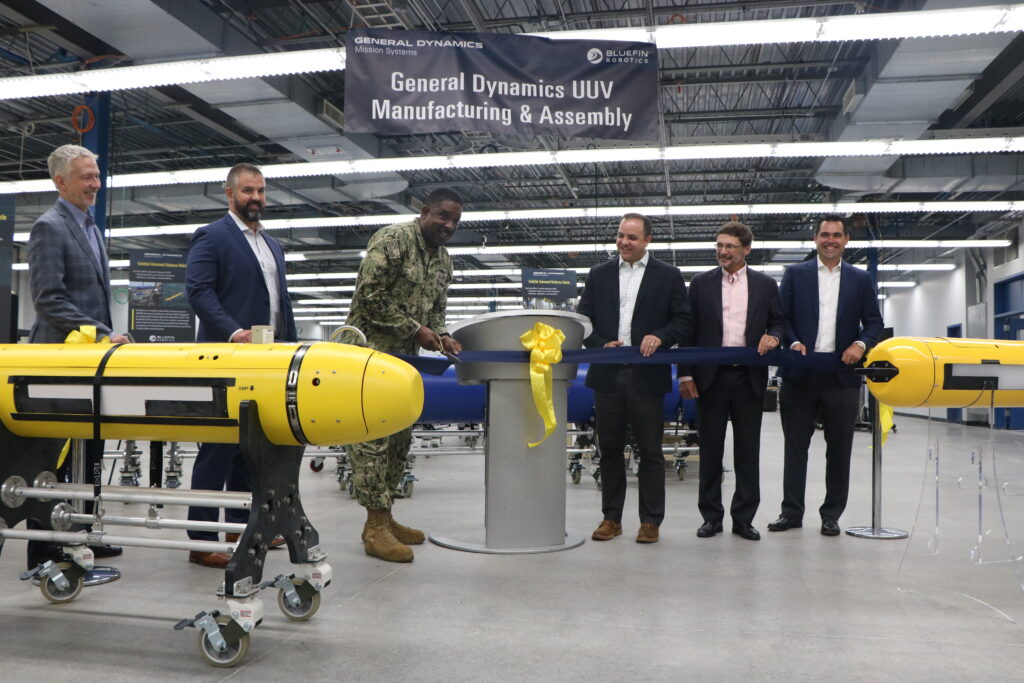
General Dynamics Mission Systems and Navy officials at a ribbon cutting ceremony for the company’s new manufacturing space dedicated to the Knifefish unmanned undersea vehicle.(Justin Katz/Breaking Defense)
TAUNTON, MASS.: General Dynamics Mission Systems on Friday opened a new manufacturing facility here dedicated to producing and testing the Knifefish, the Navy’s unmanned undersea vehicle for detecting buried and bottom mines.
The company is currently under contract to produce five low-rate initial production units which will eventually be upgraded to the Block I configuration, which includes improvements to the vehicle’s performance and sensors, company officials told a small group of reporters. (General Dynamics Mission Systems provided transportation for Washington-based reporters to attend the event in Massachusetts.)
The facility, approximately 8,000 square feet in size, will be capable of producing one system per month after receiving long-lead-time materials, said Craig Regnier, the manufacturing operations manager at the Taunton plant. The manufacturing space complements GD’s design facilities in nearby Quincy, Mass., where the company had been doing design work on Knifefish and has waterfront space for launch and recovery testing.
Knifefish is an unmanned undersea vehicle designed to be deployed as part of the Littoral Combat Ship Mine Countermeasures Mission package to detect buried and bottom mines. General Dynamics based Knifefish off a 21-inch diameter UUV produced by Bluefin Robotics, a company GD acquired five years ago.
The company’s Taunton facility also includes a tank to submerse each unit in and test the system’s reactions to salt water.
The five initial systems GD produces here will be used by the Navy to conduct initial operational tests on the MCM mission package — a program that has been repeatedly flogged by Congress over the years for schedule delays — and finally move the dozen or so capabilities attached to it out to the fleet. In addition to the LCS, the Navy has also eyed what vessels of opportunity could potentially employ the mission packages.
The company anticipates the Navy will compete a full rate production contract within the next two years; GD’s position as the incumbent on the LRIP contract makes it the contractor to beat in that competition.
Capt. Gus Weekes, the Navy’s LCS mission modules program manager, said he had watched GD staff launch a Knifefish at the waterfront in Quincy earlier in the week. During the testing, he said the UUV experienced a failure but praised the company for its ability to recover the drone despite the issue.
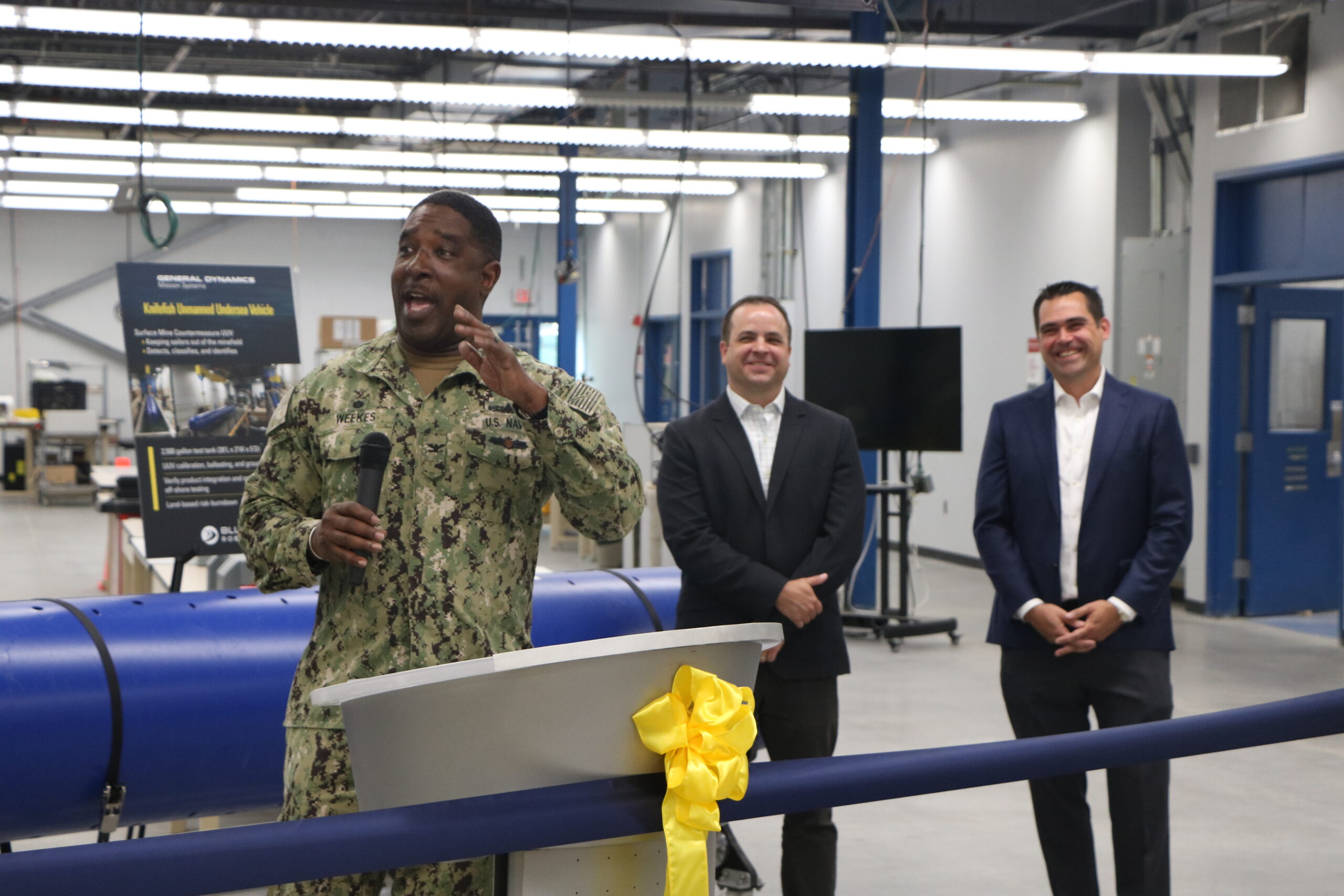
Capt. Gus Weekes (left) is the Navy program manager for LCS mission modules. (Justin Katz/Breaking Defense)
Paul Dalton, vice president of undersea systems, told reporters the unit experienced a propulsion issue and staff were able to remotely troubleshoot the problem within 10 minutes.
“By the way, this is exactly what the sailors would be trained to do,” said Carlo Zaffanella, vice president and general manager of maritime and strategic systems. “You put stuff in salt water, stuff happens. He [Weekes] really wouldn’t have even recognized it as a casualty had he not been told that it had to sit there for a minute while they did that.”
Zaffanella also said the company to date has invested $30 million in UUV technology development and plans to continue advancing the technology that is ultimately bound for Knifefish’s Block I configuration while it produces the LRIP systems.
“We foresee a strong era where UUVs, eventually the unmanned surface vessels as well, will form a part of the fundamental fabric of how the Navy conduct its operations,” he said.

Carlo Zaffanella, vice president and general manager for maritime and strategic & systems at General Dynamics. (Source: Justin Katz/Breaking Defense)
Defense companies keep up momentum on share repurchases, despite Navy leader’s criticism
Capital Alpha Partners found that buy back amounts at defense contractors were higher this financial quarter for all but only four others since March 2011.










